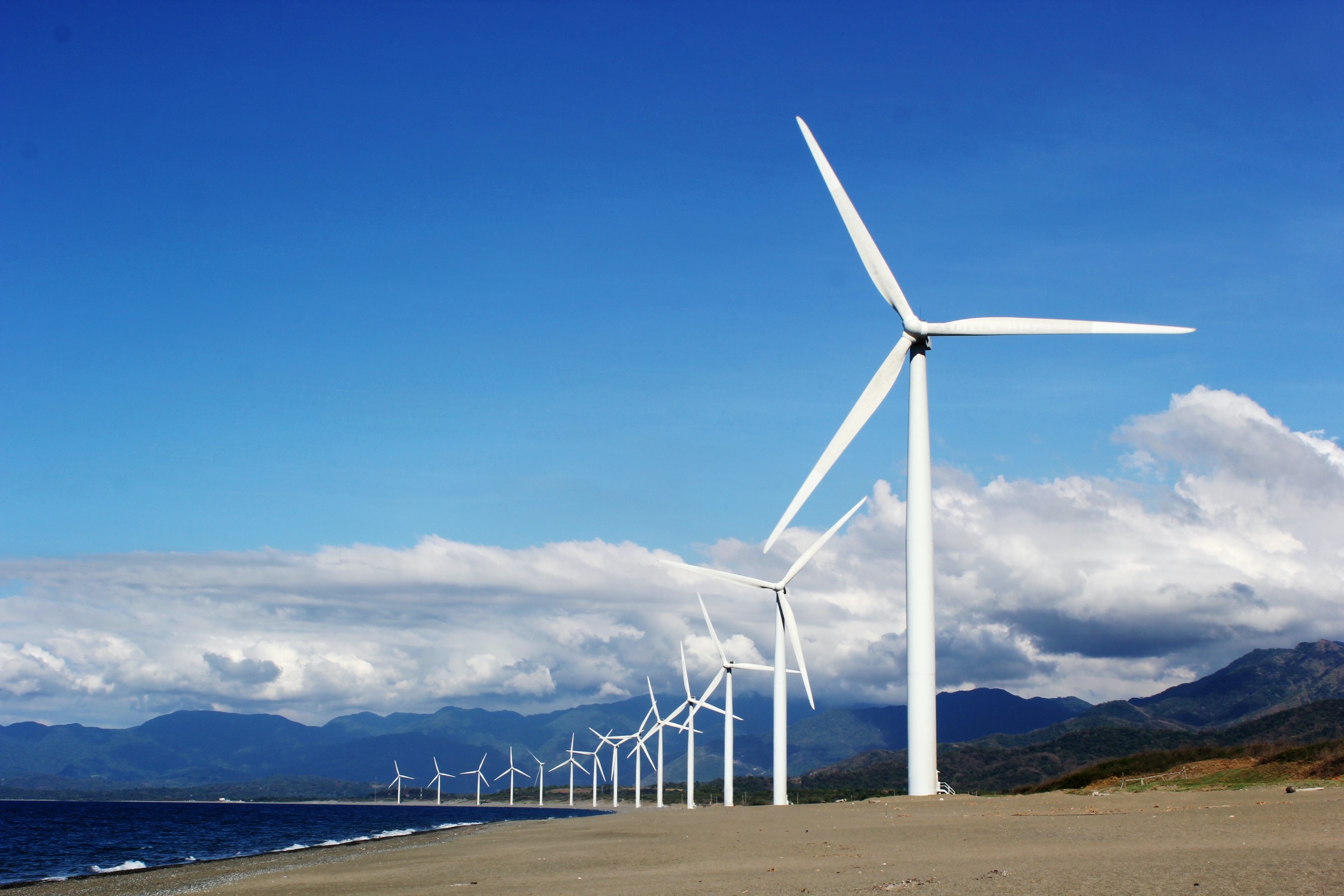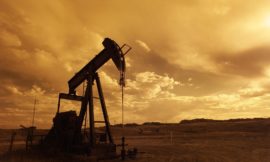In this episode, we discuss some of the considerations if you are approached to lease your land for a wind farm and some of the pros and cons associated with wind energy. Little did we know how soon after recording this episode we’d be faced with an energy crisis and rolling blackouts in Texas due to record low temps and widespread snow and ice storms freezing all types of energy production in the state. From preventable problems with natural gas power plants to half of the Texas’ renewable power offline due to frozen wind turbines and snow covered solar panels, this highlights the need to be measured in our approach to a low carbon energy future.
Our thoughts go out to those in Texas currently faced with the current energy crisis. Once we all thaw out, this episode has a lot to think about as it relates to wind energy and how we make a smart transition to a low carbon future. Enjoy and we’d love your thoughts – email feedback@mineralrightspodcast.com
Be sure to also subscribe on Apple Podcasts via the link above (or wherever you get your podcasts) and please leave us an honest rating and review. We read every one of them and sincerely appreciate any feedback you have. To ask us a question to be featured on an upcoming episode, please leave a comment below or send an email to feedback@mineralrightspodcast.com.
Wind Energy Considerations
A topic that has been in the news a lot is “green” energy and specifically wind energy. We fully recognize that wind turbines aren’t a reliable source of energy because the fact is the wind doesn’t blow all the time, need reliable source of energy from coal, gas, hydro, or nuclear to balance things out until there is a cheap mass storage solution to release energy back into the grid when the wind isn’t blowing. That said, all forms of energy need to be part of our energy future and we need to make the transition to a low carbon energy future with as few disruptions as possible. Forcing wind and solar before we have a low cost mass storage solution in place will only set us back and the blackouts experienced in California in the summer of 2020 and in Texas in the winter of 2021 will become an everyday occurance.
We interviewed author Alex Epstein in Episode 73 where he spoke about his excellent website energytalkingpoints.com. On his website, you’ll find a section on Wind Production Tax Credits where you can find out more about some of the considerations with Wind Energy.
Fact of the matter – government mandates are steering more utilities to generate electricity in what is perceived as carbon neutral way, like wind & solar. We’ll talk about the facts around the work that is involved to install a wind turbine.
Mineral Rights vs. Surface Rights
Taking a step back, when we talk about what attorneys talk about the bundle of sticks or the different rights that are associated with land, we talk about mineral rights a lot on this show but there are other rights like surface rights, executive rights (right to negotiate an oil & gas lease, for example). There are a certain number of rights that go with the land that represent each of the sticks. If you have fee simple ownership to the land, you own the entire bundle and the string holding the bundle together is your deed. For severed mineral interests only, you might just own one or two of the sticks. So for today’s conversation we’re going to talk about the surface right stick and leasing the surface for use as a wind or solar farm.
I’ve had several listeners ask about this so I figured it was about time we covered this topic. Most recently, Mike submitted a listener question about this, he said:
I’m interested in Solar/wind power as it relates to Surface rights leasing. Also do oil/gas leases have priority over Solar and wind energy farms. Read that they they do, lost the article.
Listener Question from Mike
So when we talk about specific property rights, obviously each person’s circumstances are unique, laws vary from state to stand, and you need to review your deed and get help from a competent attorney if you have any questions.
But for the sake of our illustration we’re going to be talking in general terms about some of the things to think about if you are interested in leasing your land to a utility company for a solar or wind farm or if you are approached by a company to lease your land for one of these.
What is a Wind Farm?
So everyone is probably familiar with the sight of large white wind turbines located in a specific area, this is what we are talking about when we say wind farm. Developers and utility companies utilize wind farms in an area with consistent winds to generate electricity. Usually, they will try to install multiple wind turbines together to take advantage of the favorable conditions associated with a particular location and as such it could be said that they are harvesting the wind to generate electricity.
Each of the wind turbines contains a generator and the spinning turbine blades turn the generator to generate electricity.
Considerations and General Requirements for Wind Turbines
The way the wind turbine works depends on the type of turbine. They can either face directly into the wind (upwind) or away from the wind (downwind). The turbine blades turn at between 30 to 60 rpms and they are connected to a gearbox which then increases the speed so that the attached generator can generate electricity. Because the blades are so long, many large scale wind turbines require an electric kick start to overcome inertia to start turning.
Wind turbines can be built to a wide range of specifications so the required wind speeds vary but in general most need at least 7-9 mph to turn.. Wind turbines usually also have a braking system to prevent damage if the wind starts blowing too hard (around 50-55 mph).
Economics may vary but generally speaking, most companies will look for areas that have an average wind speed of at least 15 mph in order to consider putting a wind farm somewhere.
Another consideration is the wind turbines must be spaced a minimum distance apart so that drag and turbulence from the upstream wind turbine doesn’t adversely affect the downstream wind turbine’s ability to generate electricity.
The information I found is for standard rotor diameters of around 262 feet (that is the diameter of a circle if you were to draw it at the ends of the turbine blades), the spacing between wind turbines would need to be a minimum of 7 rotor diameters away (or 1,800 feet apart) and some studies recommend 15 rotor diameters away to increase efficiency (around 3,900 ft).
What is involved with a wind farm, what else might get installed?
- Wind turbines – As you can imagine with the 1,800 foot minimum spacing, a lot of empty space between wind turbines that can be used for other purposes such as grazing or farming. According to a study by the National Renewable Energy Laboratory (NREL), they looked at total land use for 172 large scale wind power projects. They found an average of 4 megawatts per square kilometer. So for a typical 2-megawatt wind turbine, it would require about a half of a square kilometer which is around 123 acres. Many companies would only look at installations of a certain size, I’ve seen between 2-20 turbines or more). So a project with 20 turbines would require that would require around 2500 acres or just under 4 sections of land.
- Roads between the wind turbines and any power stations associated with the wind farm
- Large concrete base must be placed as the foundation to give the wind turbine a stable platform. For perspective, for each of the 328 ft high towers in the Blue Creek Wind Farm in Ohio, 15 to 20 foot deep concrete foundations were required and 60 truckloads of concrete (750 cubic yards). For that wind farm which has 152 wind turbines and a capacity of 304 MW. interestingly, 304 MW would be a relatively small natural gas power plant. Looking at Ohio for comparison, most natural gas power plants have a capacity of more than 500 MW, many are upwards of 1 GW+. Also, the Blue Creek Wind Farm had a capacity factor of 29.5% in 2019 which reflects the actual amount of electricity generated vs. if it had operated continuously at the maximum plant rating. Most of the natural gas power plants I looked at had a capacity factor of 70-80% which reflects the extent of the use of the power plant. Of course with wind farms, the wind doesn’t always blow so they are not as reliable and usually have a lower capacity factor because of this.
- To give you a feel of how much area is taken up by these concrete bases, roads, and sub-stations, according to that same NREL study which also looked at the direct land usage and it came to .75 acre per megawat of rated capacity. So for a 2 megawatt wind turbine, it would require 1.5 acres of land. So this is the direct land use, in other words, the amount of space used for the tower foundation, roads, and sub-stations.
- Also, a lot of steel is required to generate electricity from wind. According to The Moral Case for Fossil Fuels, 542.3 tons of iron + steel is required per Megawatt vs 5.2 tons to generate electricity with natural gas. So for a 2 megawatt wind turbine, that would be 1,084.6 tons of steel + iron. According to the World Steel Association, average greenhouse gas emissions per tonne of worldwide crude steel output stand at ~1.8 tons CO2 per ton of steel produced. So for a 2 megawatt wind turbine, the CO2 emissions alone would be 1,952 tons. According to the EPA, the average car emits about 4.6 metric tons of CO2 per year. So the steel in a 2 megawatt wind turbine installation is roughly the equivalent of 424 passenger vehicles driving around over the course of a year.
Attributes that Wind Developers Look For
- Windy (average wind speed 15+ mph)
- Terrain suitable for vehicle access for construction and maintenance of wind turbines
- Not too close to populated area or other obstructions that might block the wind
- Proximity to the electrical grid
How Valuable is My Land if it is Suitable for a Wind Farm?
Most of the time, wind farm developers perform large scale studies to determine where it is most advantageous to place a new site and they will then go out and contact the landowners to try to obtain a lease. They already have a good idea of where it makes sense to locate a wind farm based on terrain, average wind speed, proximity to roads and power lines but if you think your land might be suitable, it can’t hurt to contact companies who are building wind farms in your state to see if they might be interested.
Like with mineral rights, it boils down to location-location-location. Owning mineral rights in an area with good geology and prospects for oil and gas development is similar to owning a large amount of surface land in a windy area close to the grid and with suitable roads leading to your property
What is a Wind Energy Lease?
A wind farm lease is like another type of surface lease, whether a grazing lease, or a building lease. You are granting the lessee the rights to use the property in question for a specific period of time in exchange for monthly rental payments.
With wind farm leasing, if your property meets the first pass of their requirements, they may contact you to survey your property and perform soil testing to ensure that the terrain and stability of the ground would be suitable for installing wind turbines.
When you lease your mineral rights, an Oil and Gas Lease is used to outline the terms of the agreement. With a Wind Energy Lease, they are usually called a “Wind Energy Land Agreement”.
Some Wind Energy Land Agreements feature a primary term of 3 to 10 years so that the wind developer or utility company can perform the due diligence to verify the suitability for a wind farm on your property, like measuring the actual wind speeds over a period of time and to make sure you actually have title to the property. If they move forward, the term of most wind farm leases is 35 years, so you need to be willing to tie up the land for at least that long. Check the laws in your state as many states have adopted provisions that limit the effective period of wind leases to a set number of years.
Like other agreements pertaining to the use of the surface rights, the Wind Energy Land Agreement outlines what type of facilities are allowed on the property and the use of resources on the property like water or aggregate to make concrete.
https://www.stoel.com/legal-insights/special-reports/the-law-of-wind/wind-energy-lease-agreements
Like with an oil and gas lease it is important to negotiate favorable terms like the payment structure for allowing the wind farm on your land. This might include an initial payment which is similar to the lease bonus that is paid upfront in a paid-up oil and gas lease. Then, there are also minimum rental payments that would be covered that would be paid monthly, quarterly, or annually. This is usually before the wind farm starts operating and is like the periodic rental payments on some oil and gas leases. Then, once the wind farm starts generating electricity, operating fees are paid to the landowner. This is one of the most important parts of the Wind Energy Lease Agreement because it will dictate how much you are paid based on things like either the percentage of revenue generated from the sale of electricity, or fixed rate per megawatt hour, or based on the number of turbines installed or number of acres used by the lessee.
While we won’t go into detail as to the specific terms to look for, suffice it to say this is where a qualified attorney is really critical to make sure your interests are protected, we’ll link to an excellent article that we found that outlines some of these terms.
Interesting thing to note, as you may know, with mineral rights they can be reserved in a deed when a landowner sells their property. Similarly, the concept of severing the “wind rights’ and reserving the associated rights has popped up. This is a controversial topic and some states have actually prohibited this in state laws related to wind projects. If this is something you are considering, it is important to work closely with an attorney familiar with this area of the law to make sure it is actually legal to do so in your state. Unfortunately, even if you were to reserve the wind rights you might actually be doing more harm than good because future landowners would have little incentive to allowing wind developer to build a wind farm on their land because they wouldn’t be able to fully benefit financially. Justin mention wind rights
It will be interesting to see what happens as legal precedents are set but unless the wind estate ends up being dominant over the surface estate, it is not the same as severing the mineral rights from your fee ownership when you sell the surface rights. In most states, the mineral estate is considered the dominant estate because the ownership of minerals would not be useful if you couldn’t access those minerals from the surface. That said, you would really need to look at it on a case by case basis, different case law in different states, different requirements as to the types of accommodations that need to be made to the surface owner. This is often referred to as the Accommodation Doctrine which many states have adopted in the interest of balancing surface vs mineral owners rights.
Outlook for Wind Energy
With the current focus on zero carbon emissions from power generation by 2035 and the United States rejoining the Paris Climate Accord, the future is bring for “renewable” energy. So there may be more opportunities in the future to lease your land for wind power generation.
That said, I hope that we are smart about this upcoming energy transition and we make sure we have a cheap mass storage solution in place to balance out the energy supply when the wind isn’t blowing or when the wind isn’t shining. If we don’t, I fear that the blackouts we’ve seen in certain parts of the country will become more commonplace when electricity demand exceeds current supply in times where renewable power sources are not able to produce what we need.
For more information, check out Deloitte’s 2021 renewable energy industry outlook where they explore renewable energy trends and the impact of COVID-19.
Thanks for Listening!
To share your thoughts:
- Leave a comment or question below (we read each one and your question may be featured in a future episode)!
- Ask a question or leave us feedback via email or voicemail: (720) 580-2088.
To help out the show:
Click the Apple Podcasts Logo Above to leave us a rating & review. It really helps us reach those that need to hear this information and only takes a minute. We greatly appreciate it! Plus, you can get a shout out on a future episode!
Thanks again – until next time!





Pingback: MRP 94: Leasing Land for a Solar Farm – The Mineral Rights Podcast